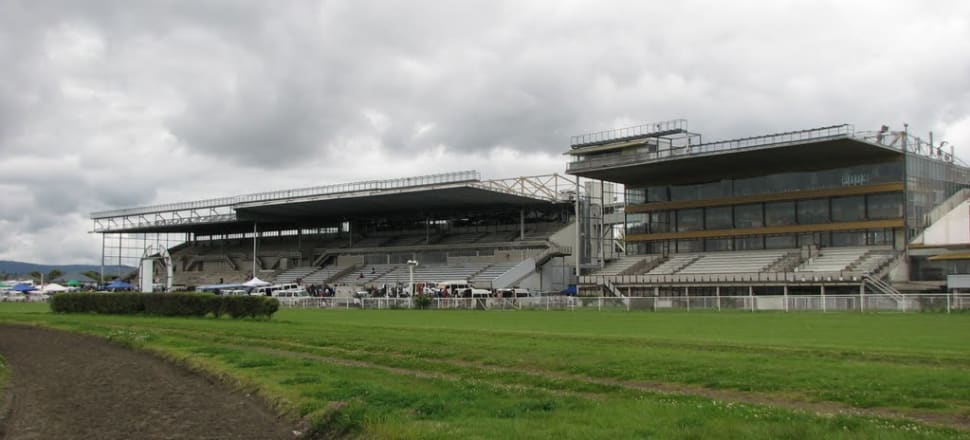
The announcement of a 700-unit development opens the door to converting Auckland's run-down Avondale Racecourse to housing. There are lessons on the exploitation of such green space from the other Avondale, in Christchurch.
The Avondale Jockey Club's most recent media release is depressingly honest. Its opening words are: "Racegoers were few and far between at Avondale on Saturday ..."
The poor attendance at the club's infrequent race meets highlights a tough question: how do New Zealand cities strike a balance between the protection of poorly-used parks, golf courses and raceways, with the urgent need for more intensive housing?
The question was brought to the fore yesterday, with the announcement of a big housing development next to the Auckland racecourse. The city council's development agency Eke Panuku has purchased the vacant site left behind by a long-closed Three Guys supermarket, and the adjacent Kainga Ora lot containing 42 ageing housing units.
It is on-selling the combined 1.58ha package to a consortium of the Marutūāhu iwi group and developer Ockham Residential. Once the tenants have been moved out in 18 months, the partnership plans to build eight apartment buildings up to 10 storeys high, with more than 700 units. Ockham says it will be the biggest single consent housing development in Auckland.
Auckland Council already leases the adjacent Avondale Racecourse infield for sports fields, but it wants more. Eke Panuku's high-level project plan to "unlock Avondale" from years of urban decay reveals it has its eye on the racecourse, whose near-derelict grandstands, rusting structures and broken windows are an eyesore for passers-by.
"The Avondale Jockey Club has subdivided and sold a number of parcels of land from the original landholding to enable racing to continue on the site. This piecemeal development degrades the site’s strategic value and will make it harder to deliver a quality master-planned development that supports the regeneration of Avondale," the plan says.
"I would suggest it's an extremely valuable piece of land. There are discussions underway, there is a plan in place, but it is commercially sensitive." – Bruce Sharrock, NZ Thoroughbred Racing
"Retention of the playing fields is important to Auckland Council as is the delivery of higher density housing. Panuku will look for opportunities to secure certainty over the long-term future of the racecourse that will include continuing to work with key stakeholders such as the Avondale Jockey Club and the council family to seek positive outcomes."
The two-year refurbishment of the Ellerslie Racecourse has bought Avondale Racecourse some respite, but its thoroughbred racing licence comes to an end in 2025/26. At that point, all bets are off. Newsroom has learned that the owners, the Avondale Jockey Club and their national body NZ Thoroughbred Racing, are already in commercial talks to turn over much of the valuable 30 hectare property to housing.
NZ Thoroughbred Racing chief executive Bruce Sharrock wouldn't reveal much. "Given what's going on in that part of Auckland, and Auckland in general, it'd be pretty foolish to think it would be anything but housing," he tells Newsroom.
"I would suggest it's an extremely valuable piece of land. There are discussions underway, there is a plan in place, but it is commercially sensitive."
Another Avondale, another course
There is another Avondale. The low-lying Christchurch suburb was one of those worst-hit by the 2011 earthquakes. Much of the land was liquified. Nearly half the houses were red-zoned.
Richard Sinclair grew up in Avondale, just 800 metres from the Avondale Golf Course. He was out playing a round on the day of the big quake. "The family house was was pretty much destroyed. My mother's house was destroyed, only a couple of kilometres away," he says. "It was pretty much impossible to get to those places after the earthquake, unfortunately, because of the flooding and liquefaction.
"My mother lost the house. A beautiful three or four-year-old house that she would have probably seen out her days in. And so she had to hop from emergency rental to emergency rental until she was really forced to spend her insurance money on a house that wasn't nearly as nice."
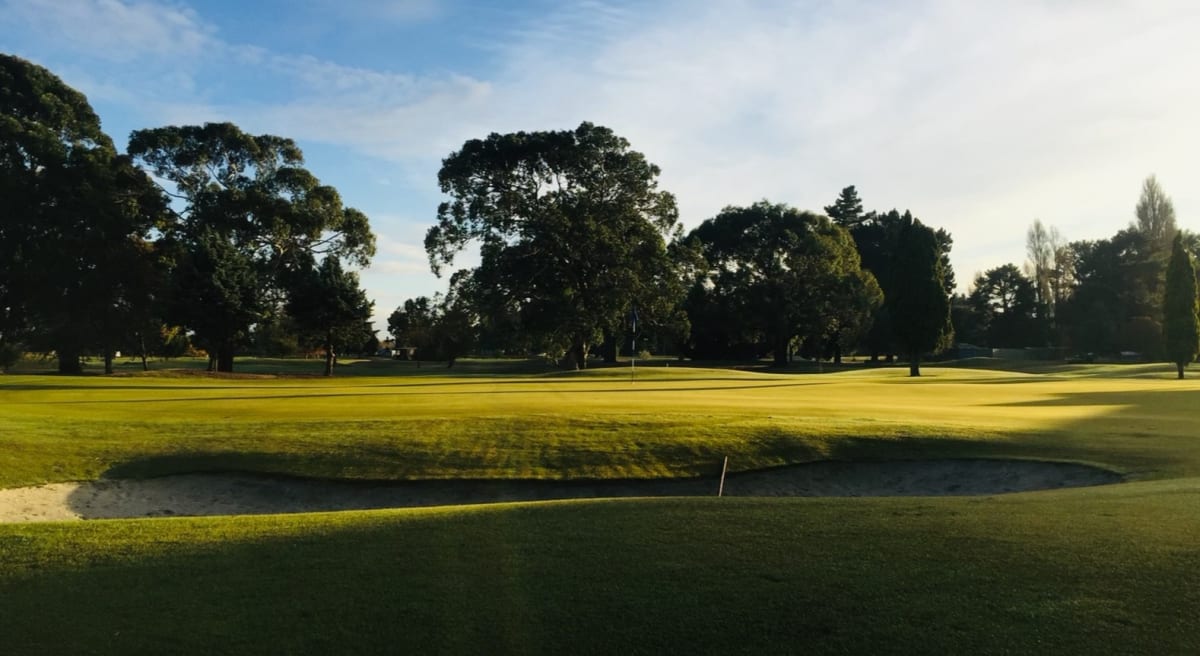
With Avondale's primary school, the Cardrona-on-Avon watering hole and the neighbouring shops all written off, the shattered community was left with few places to come together and plan a recovery. So the golf club opened up its doors; a residents' association was reinvigorated; locals held their meetings at the clubhouse.
Soon after, Sinclair took up the job of general manager of the golf club, which was facing financial ruin. And as the Canterbury Earthquake Recovery Authority looked desperately for solutions to house those left behind, it entered into talks with the club about a land swap.
Much like the Avondale Racecourse in Auckland, this was 30 hectares of private property owned by the club.
"The ‘Dale, keeping golf fun, fair, inclusive and affordable in the east side for 101 years'," the club's Facebook page boasts. But "inclusive and affordable" is a moot point. Membership costs $895 a year, and is capped at no more than 600 members. Thirty-six thousand rounds are played on the course in a year - which means the average member plays about once a week.
"This is actually a thriving place that employs people. People that come here enjoy it immensely. I think it is offering something to the community. If it wasn't, then I think we'd look at options of what the future of the golf course would be." – Richard Sinclair, Avondale Golf Club
When so many of its neighbours had been left homeless, the community asked, why should these sprawling green fairways remain the domain of a few affluent golfers?
The talks stumbled along without direction. Eventually, the golf club's board decided to terminate discussions. "We felt like they were probably just wasting more money on things that weren't going to happen."
Instead, they took their insurance company to court for a decent payout, and embarked on a project to restore the course and build a new clubhouse, with sweeping views of the course.
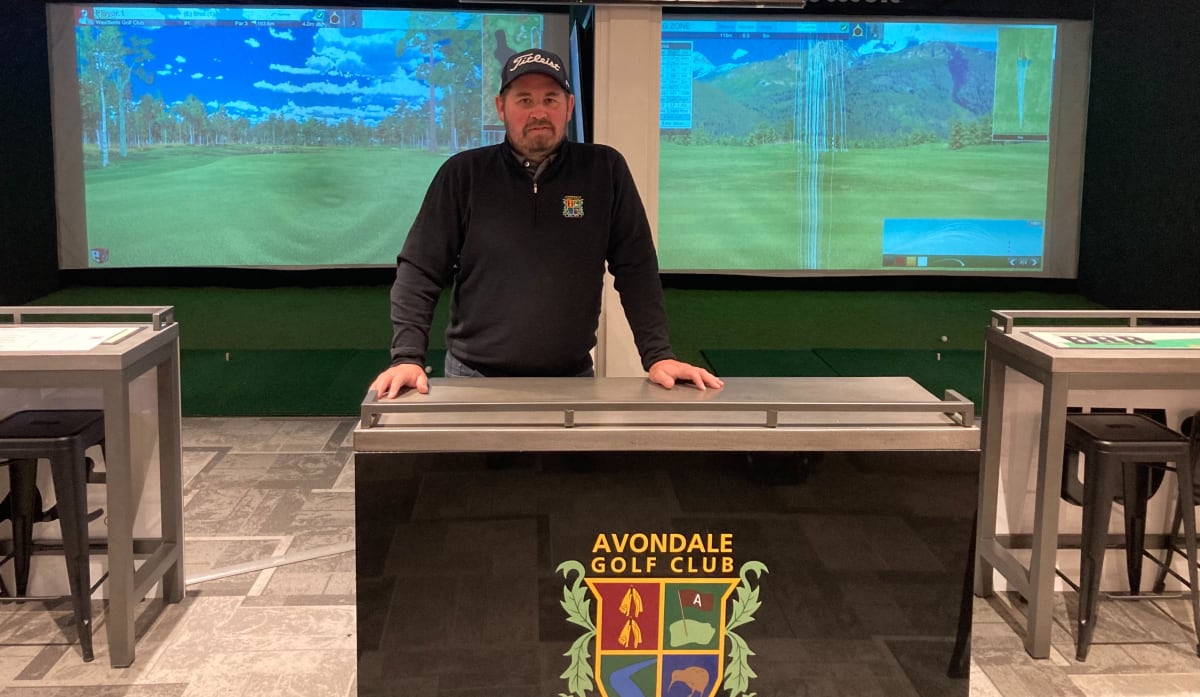
Realestate.co.nz data, published this week, shows the average asking price for a house in Christchurch's Avondale has increased 47 percent in the past year $609,600 – but that's off a small sample. Just 10 houses were listed in the past two months, which reflects just how few homes are now available in the damaged suburb.
As a result, the population has dropped. It was the elegant houses alongside the Avon River that were written off after the quakes; those people have moved elsewhere. The suburb had 2,733 residents at the time of the 2006 Census; two years after the quakes, that had dropped to 2,352. Of those who remain, 63 percent more are unemployed, and 50 percent more are renting.
Incomes are lower than the Christchurch average. And according to local board member Linda Stewart, choosing her words carefully, the people who live there now are less likely to be members of the private golf club ...
Sinclair says there were those on the golf club's board and committee who saw how their land could help meet the city's need for housing; there were others who were worried the value of their own surviving homes would be eroded, if they lost the sweeping views of the elegant 18-hole golf course on their doorstep. "The board took the position, is that the best thing for the community moving forward that we're only worried about the people who might lose their view?"
In the end though, he says there was no point proceeding with the land swap. The aftermath of the quakes left plenty of empty properties in Avondale; if the Government wanted to rebuild in the neighbourhood, it was spoiled for choice.
Sinclair insists the club is of value to more than just its 600 members. There are no big iron gates, no high fences. Locals can visit the restaurant and bar; neighbours can walk their dogs around the perimeter in the evenings, charity tournaments raise money for good causes like the Cancer Society.
"This is actually a thriving place that employs people. People that come here enjoy it immensely. I think it is offering something to the community. If it wasn't, then I think we'd look at options of what the future of the golf course would be."
Unlocking urban renewal
Avondale in Auckland hasn't suffered the devastation of earthquakes. Instead, it's endured the gradual grim decay of its community and its urban environment. Incomes were low; crime rates were high; shopfronts were boarded up.
Unlike Christchurch, Realestate.co.nz asking prices in Auckland's Avondale are up only incrementally this year, to $1.05 million. There were 35 properties listed there in May, and another 25 in June. Prices and volumes of listings have been hard hit by rising interest rates this year – but there's still a housing shortage. There were 3,030 people listed living in Avondale Central at the 2018 Census, up 27 percent from 2006. There were 20,082 across wider Avondale. They all need homes.
Over 15 years, Eke Panuku plans to build 1500 homes and quality residential neighbourhoods, with new open spaces and purpose-built community facilities. A new library and community hub are being built, alongside the 700 apartments on the 1.58ha block of land next to the racecourse.
"The scale of development will need to be significantly increased," according to its plan for Avondale.
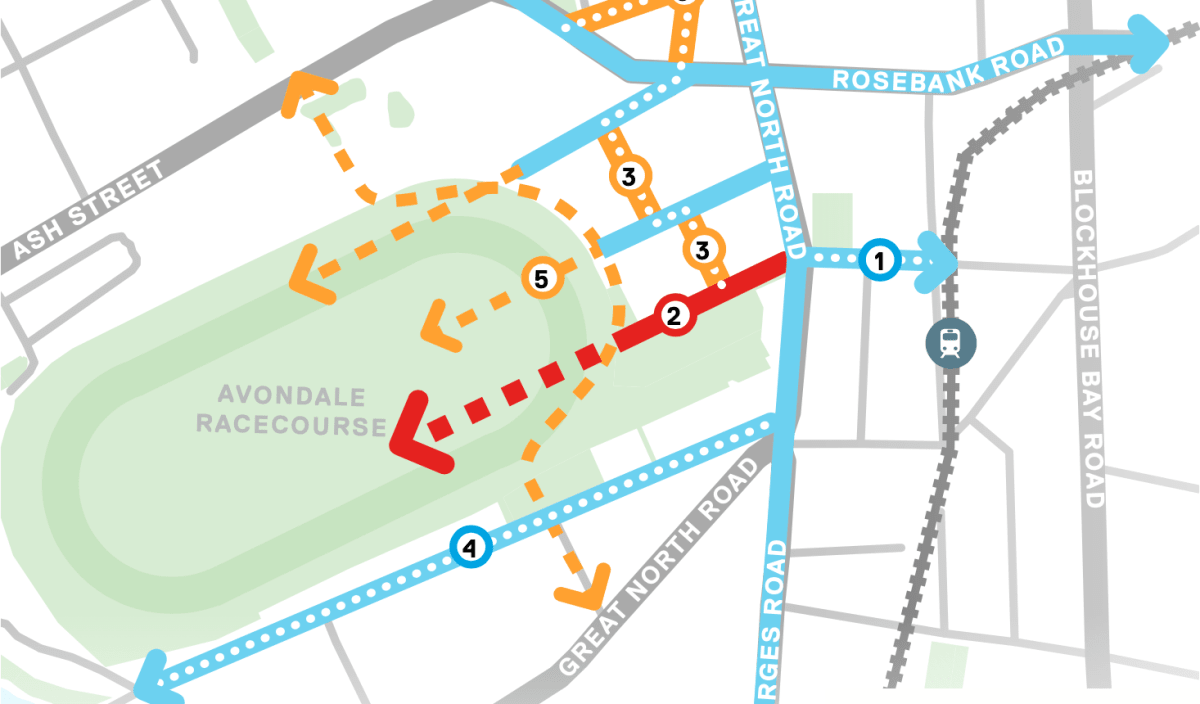
The plan includes a map that is slightly dated now; the red line signalling the planned extension of Crayford Rd West has now been replaced with plans for a walking and cycleway. But the potential roads criss-crossing the map of the racecourse clearly signal Eke Panuku's hopes and expectations: that the racecourse will eventually be subsumed into the agency's wider development plans for Avondale.
A corner of Avondale racecourse has already been sold off for apartments, helping bail the Avondale Jockey Club out of major financial difficulties.
But as Eke Panuku notes, the carve-off of small blocks is piecemeal and not part of any wider plan.
A few years ago, NZ Thoroughbred Racing was on the verge of intervening and forcing the racecourse's closure, but with the refurbishment of Ellerslie Racecourse, the Avondale grass track has provided a useful stopgap solution for racing.
Club president Tracey Berkahn isn't saying much about the future after the racing licence ends in 2025/26.
"Avondale Jockey Club is supportive of the new development planned for Racecourse Parade," she observes. "For a number of years, the club has been welcoming of the Eke Panuku programme to 'unlock Avondale', to recognise the benefits of intensification within proximity of the Avondale train station.
"Indeed, the Avondale Jockey Club itself has sold a small parcel of land in the adjoining Elm Street and that project is well underway towards a three-storey housing complex."
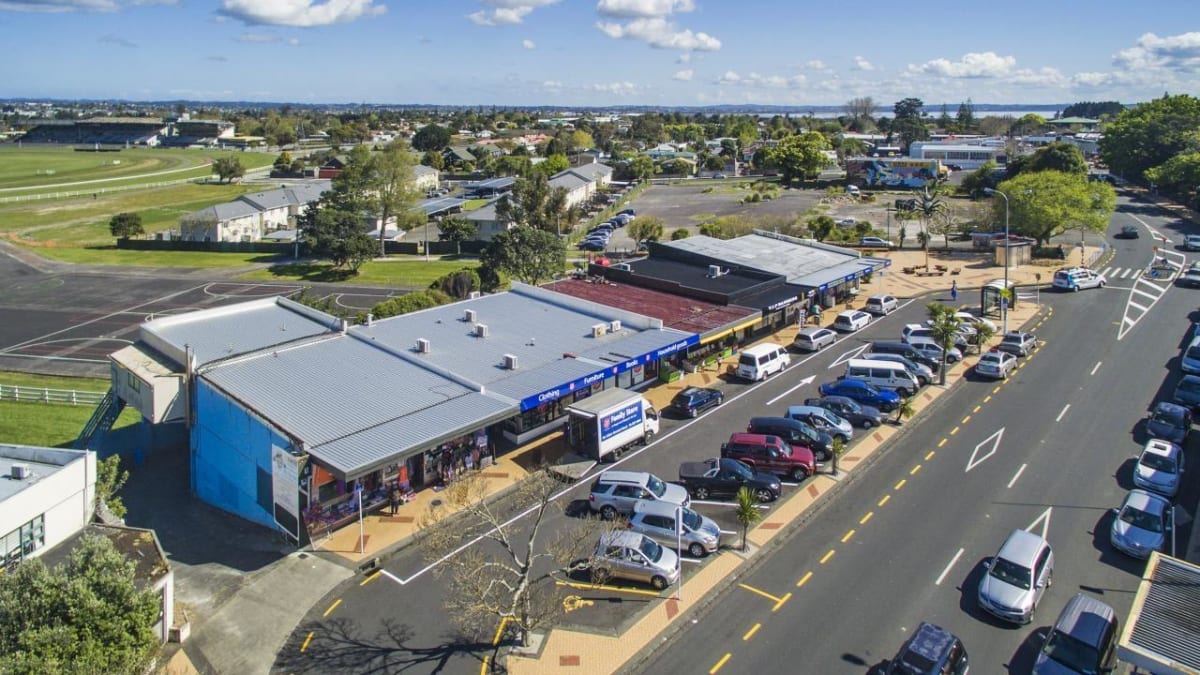
But the city's leadership is clear: a wider regeneration of central Avondale is much needed and long overdue.
“For years, sites such as the one once occupied by Three Guys have been left vacant, creating an atmosphere of neglect,” says Auckland mayor Phil Goff.
“The new development by the Marutūāhu-Ockham Group will be high quality, with well-designed housing providing homes for thousands of Aucklanders. It lies adjacent to where council will be building a new town square, library, and community hub.
"It will be well served by rail, bus, and walking and cycling links, and will have easy access to the city. The town centre will be boosted by new retail and commercial outlets – it’s going to be a great place to live."
Balancing sustainable development goals
The tale of two Avondales highlights the most fundamental question faced by urban planners and developers.
How do we balance the sometimes competing needs of individuals (warm, safe homes) and communities (infrastructure that supports thriving neighbourhoods and business) and the environment (reduced emissions and climate adaptation)?
Former Christchurch mayor Garry Moore says councils across New Zealand will have to address the areas taken by golf clubs and racing clubs, which were developed in times when there was no shortage of land for housing. "These areas would often make brilliant housing spaces and could be used to provide affordable housing for younger generations," he says. "The land could become leasehold rented at a peppercorn rental. Young families would then be able to afford the construction cost of their homes, plus site development costs."
But more challenging still, there are those who admit Christchurch got it wrong in the brutalising aftermath of the earthquakes. Arguably, low-lying parts of Christchurch east should never have been rebuilt. The marshy land has dropped nearly a metre, sinking to meet the rising waters of the South Pacific Ocean.
This should have been apparent to the earliest settlers. "Long before there was any real development, people walked up and down the country but they didn't walk through the centre of Christchurch, they avoided it," says Richard Sinclair.
But instead, the wetlands were reclaimed for a city that sprawled, and sprawled. The earthquakes made it clear just how poorly the region had been served by generations of development decisions, and indecision – yet still, there was the blinkered determination to rebuild.
"I've seen streets in this part of town where houses could have remained, and the whole street has gone. And I've seen four and five houses rebuilt in a row and some of the most lucrative parts of Christchurch, where there was no talk of closing the street and taking the land back."
Linda Stewart agrees: "One of the things I worry about is sea level rise, ground slumping, groundwaters rising," she says. "I wanted Avondale and Dalllington included in the adaptation plan. We've got the Heathcote River, we've got the Wairarapa Stream running into the Avon River. And as lovely as that river was, that's really screwed the city – especially us over here."
She argues that large parts of east Christchurch should be reconceived as, essentially, a recreation area – a big playground. "All sorts of water, nature, birdlife, wildlife, even forests – I would really like to see the forests return."
With the benefit of hindsight, should these areas have been rebuilt after the quakes?
She laughs nervously. "I could get killed for this!
"Sea level rise is an issue and so is our sinking city, and I'm not just talking about the east. There are red zone pockets right across over to Bishopdale, Redwood, Wairarapa Stream around Fendalton. These things need to be monitored and reported on publicly and that's what I have been striving for this this term."
More of Christchurch should have been red-zoned, she says. "Of course, it's all very well for me to say that, but somebody had to pay for that, and that was the government of the day. Homeowners could have got good payouts because their valuations were high.
"You can't fight nature."
Adapting better
Auckland's Avondale, on the most part, doesn't face the imminent threat of rising waters – but Avondale and neighbouring New Lynn have suffered floods when the Whau River has broken its bank in major rainstorms.
In March 2017, 225 homes in West Auckland were flooded when an intense downpour dropped 49mm of rain in an hour. Avondale Racecourse's rain gauge captured a record 77.3mm in two hours – what should have been a one-in-100 year event.
The effects of large weather events include surface flooding, coastal inundation, landslips, erosion, and wind damage, according to a council-commissioned review published two years later. "More than the specific magnitude of the storms, the context of the March/April 2017 storm series drove the consequences: repeated weather events in quick succession affected increasingly saturated ground," wrote analyst Nancy Golubiewski.
"Although the public and media attention were captured by the touching and sympathetic stories of those flooded out of their homes and businesses – all legitimate and important occurrences – the consequence with the most leverage in this assessment was the economic one ... The risk and vulnerability of building in flood plains is more evident when considering what happens to buildings in the most hazardous areas."
Planned badly, more Avondale houses will mean those who live in them will be vulnerable. Done right, there is the potential for Avondale to be a haven of intensive urban living, and a refuge for those fleeing the coastline.

Unlocking Avondale is listed as a goal of Eke Panuku's climate strategy; the early master-planned developments have been on relatively high ground. That's not necessarily the case for any development on the racecourse, like the Elm St block sold off for the construction of three-storey apartments.
The council agency's priority location director (west), John Carter, says they've been making steady progress bringing all the differing elements of urban regeneration together to ready the neighbourhood for change.
"Our urban regeneration program is enabling a more sustainable pattern of development, because we are looking at quality intensification within existing town centres, where there are already public transport and active mode options. A number of town centres in Auckland are in real decline, so there is a benefit there."
Avondale and its new developments are on the commuter rail route, the busy New North Rd bus route, and close to cycleways connecting up the city. "It's where you'd want to look to put density," he says. "And it's what the market's demanding – because none of this happens without the market."
As part of the condition of the sale, Eke Panuku has required Ockham to build the new apartment complex to a Homestar 6 environmental standard. Even in the demolition of the 42 old state housing units on the site, they will be required to minimise waste by retaining anything of value.
The new development will be built on a slight ridge, Carter says, overlooking the more low-lying racecourse and the Whau River. That means the new development should be safe when the Whau River again bursts its banks and culverts.

In her review of the Whau River floods, Golubiewski drew comparisons with the Christchurch rebuild. In both cases, the direct consequences morphed into flow-on and cumulative effects in a recovery phase. One year after the floods, west Aucklanders suffered traffic congestion due to ongoing road repairs, which retailers also blamed for business decline adding to the costs of the flood damage. And in Christchurch, the multi-year recovery had longterm impacts on the community.
In both cities, these impacts demonstrated the need to assess not just the impact of the natural disaster, but also the impact of the recovery, resilience, and even land-use planning.
Carter says the projects to redevelop Auckland will be informed by the experiences of other cities. "We're always looking to learn and improve the way that we that we do things and evolve."
So, balancing the threat of climate change to densely-populated urban areas, and the needs for infrastructure like the racecourse, does it remain important – on balance – to continue opening up more brownfield urban land to residential development?
"Yes, definitely," Carter says. "We continue to be a growing city. We need to provide housing for people."







